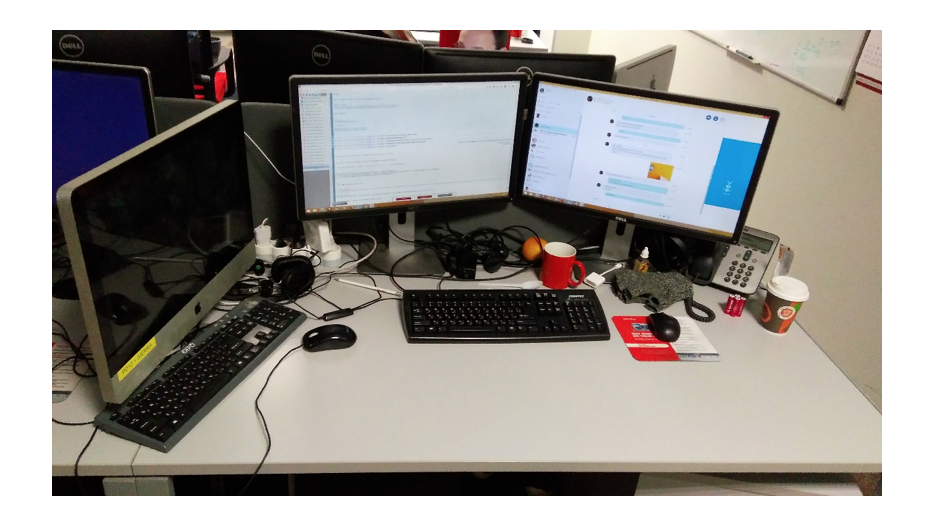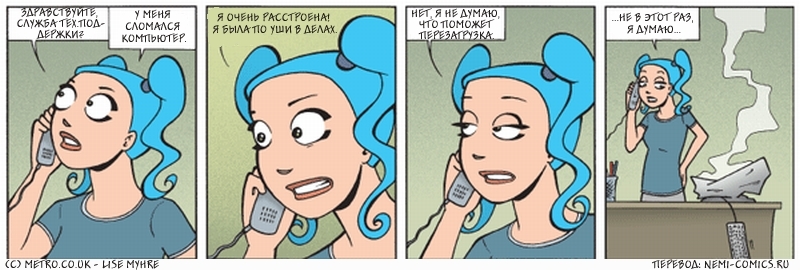Catch in 30 minutes and other records Social Media Support

Many articles have been written about technical support. They write everything: users, engineers, team leaders, directors and even business owners. I, as a technical support engineer in the past and a senior social media support engineer in Parallels in the present, also have something to share.

')
The world is changing, and with it developing various areas of our life. Technical support services are no exception. In the age of social networks, helping customers and answering questions without leaving Facebook is a rather ordinary thing. Hot numbers have been added where customers can call 24/7 and ask any questions. Chats appeared, teams are becoming more and more engineers, speaking not only English, but also in other languages. Despite the fact that English remains a priority in many services, a rather pleasant and unexpected feature is the ability to talk with a technical support engineer in your native language.

But despite the pronounced similarities of classic support and digital technical support, there are features that would be nice to consider when creating your Dream Team.
What comes to mind first when you hear the words Social Media Support (SMS)? Probably, these are social networks and similar channels in which you can be helped by answering questions, engineers, sales people, or other employees of the company. All right, but there is a specificity in the SMS, which will be discussed below.

Communication style
The first, and probably the main difference - is the language. It doesn't matter if you communicate with clients in Russian or in English, your style changes. From official business, he turns into conversational with a slight movement of his hand.
Habitual phrases and templates that were daily and hourly used in correspondence with users are transformed into short “please check this out”, “give this a shot” and “thanks for sharing!”, And after a while even these phrases manage to decrease to “Plz”, “thx”, “ICYMI” - in case you missed it and even w / instead of the usual with.

Of course, abbreviations are used only when they are really needed. For example, in order to fit your answer in 140 characters tweet. Unlike Twitter, forums and Facebook allow us to write words entirely, however, the style of communication varies considerably. By the way, “ Hey ” or “ Hi there ” replaces the usual “ Hello. Thank you for contacting Customer Support . ” And you can also add “ I mean ..” to decipher your own words in the post, or ask the user to “ We'd need more details on this ” in order to get additional information about the problem. Just asking the client whether the problem was solved - the forum is also much easier: “ Does it work OK now? "Or something very similar engineers ask users, and users themselves are not afraid to clarify once again if the workarounds have helped.


This style is first of all set by the users themselves, and there is no getting around it. Reply to a lively, smiled question “ Thank you for contacting us. Please try these steps. ... It is not only inappropriate, but also time consuming.
End of life license or end of movie
Another difference between SMS and regular support is the answers and assistance to customers with an expired license or with questions about other applications. If it is possible to explain in ordinary tickets that we no longer support these versions or the problem is connected with another application, and then close the ticket (perhaps giving the client a couple of links to articles about fixing the application or the ability to update without extra time), then social In addition to the phrase “this is the problem of the left application,” we usually try to offer a solution that will surely help our customer. Moreover, answering a person with the end-of life version on the forum that we cannot help him, because it is no longer officially updated, repaired and not maintained simply ugly, wrong and illiterate in terms of the principles of our work. This is such an official channel, which in addition to the official makes a lot more unofficial. Therefore, when working with such a question, you should try not only to describe the features of the new version, but also to do everything possible to help the client solve his question.

How to help Mr. "does not work" or the third difference
SMS is also distinguished by the fact that engineers offer the client many possible solutions in response to his questions. Often, users do not describe the symptoms in such a detailed manner as in a ticket, because perhaps they do not have a questionnaire to fill out completely, thereby answering questions of support. Usually, everyone writes on Facebook, a forum or a simple twitter: " All goats! Everything is broken. Or simply:" - Alee! Cheyta not working? "
Therefore, in order to compile a complete picture of what is happening with the client, we, as technical support engineers in social networks, can not only ask many different short clarifying questions, but also periodically send suggested and useful solutions only under certain circumstances. This allows us to understand what happened, under what circumstances, and who or what was to blame. Did you watch Dr. House? That's about as we treat lupus, Wilson syndrome and other terrible ailments, only so far without Vicodin.
Of course, this does not mean that we point our finger at the sky and try to simply execute the stats. We think, reason, test it and try to reproduce the problem in a short time and advise the customer something useful, after which everything will work as it should. By the way, our team has its own tricks. For example, if you use suitable monitoring tools, you will notice that the client does not contact us for the first time, and his next “again does not work” answer with an already prepared (possibly found earlier) solution.

Timing
In any support, the engineer must answer the user in a certain period of time, make a call in time to start a remote or just a telephone session and solve the problem. The difference of support in social. media is that these terms are significantly reduced here. You need to reply to the message within 30-40 minutes.
Of course, the response time depends not only on the indicators to be performed, but also on the complexity of the question, the competence of the engineer, a detailed description of the problem by the user, and many other factors. On average, one response on facebook takes 24 hours, on Twitter - about 11 hours. There are other indicators that indicate that a customer receives a response on Twitter within 20 minutes and within 30-40 minutes can respond to him on Facebook.
Customer expectations also vary, someone thinks that they should answer him on Twitter within a maximum of 5 minutes after his twitter, while other users say that the answer within an hour or two is quite acceptable. Perhaps it all depends on the complexity and urgency of the problem, and possibly on the employment of the client himself. Variants are possible, but the deadlines remain deadlines, and also the difference of one support from another.
But we should not forget that the solution of the issue from one replay in classical and SM support is very much appreciated.

Difficulty - Fifth Difference
Argued that in the social. networks ask questions for support only beginners, and therefore the questions are mostly simple.
But now, with the trend of active development of social media, not only the number of questions increases, but also their complexity. Of course, not a lot depends on the product produced and supported by the company, but this is only one part of the puzzle.
I myself have in practice met a sufficient number of questions from system administrators.
(By the way, it is much easier to communicate in social networks with admins, despite the complexity of their questions and problems with products. The fact is that administrators are trying to describe the problem in as much detail as possible and provide us with - all possible details, error codes and step-by-step instructions. Fisherman fisherman say so)
Instead of a conclusion.
All the differences of the classic support from the technical support of the new type are not pluses or minuses. Each of the differences can be considered as positive for any technical support. Any user simply chooses what is more convenient for him personally: create a ticket or write about a non-working program on Facebook or Twitter. It is possible that with the active development of SM support and the emergence of numerous tools for CM engineers, support will come out on top and the number of tickets will be significantly reduced. But it will be a completely different article.

Source: https://habr.com/ru/post/322860/
All Articles